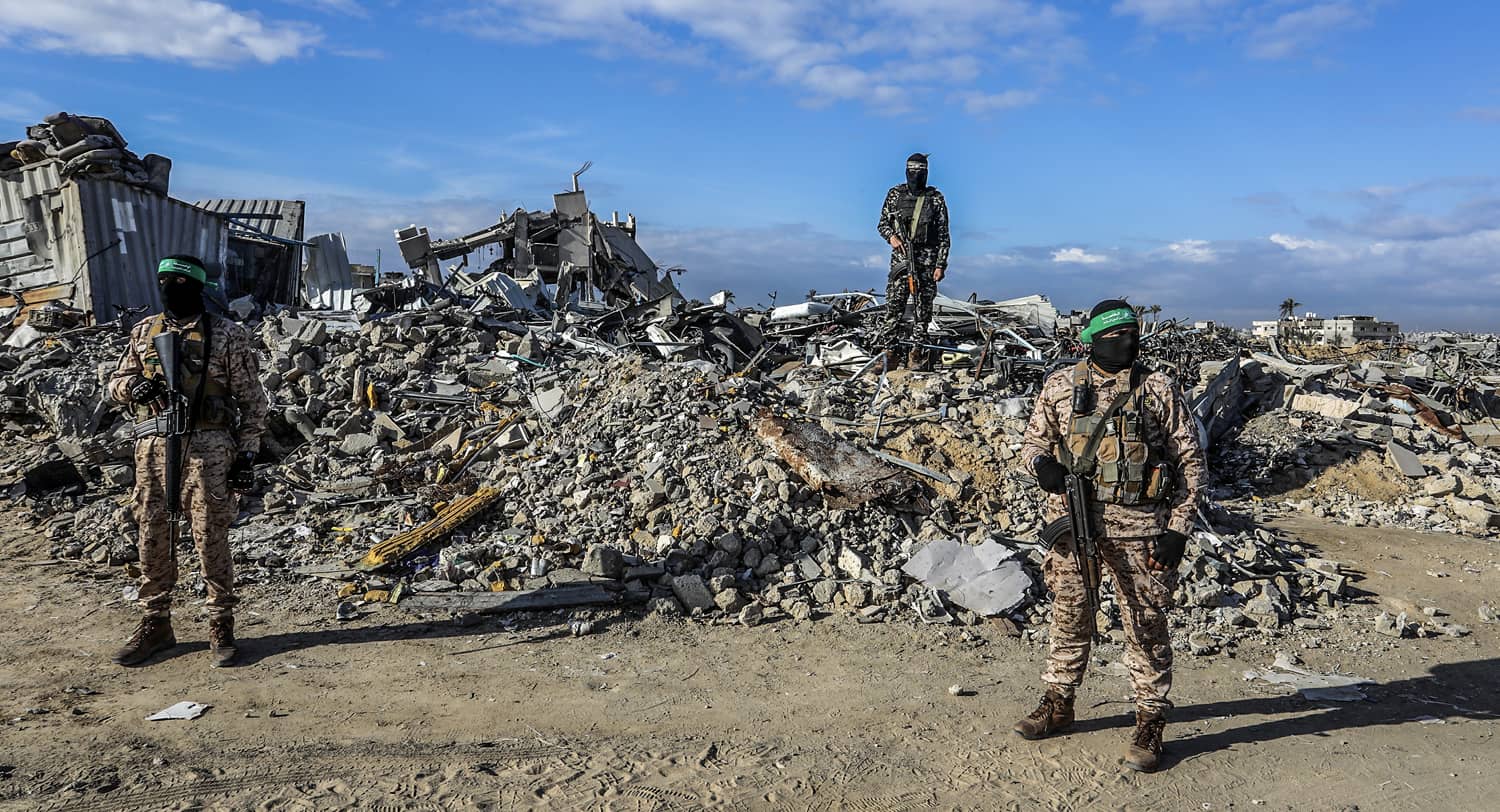Today’s Hamas is a very different organization from the one we knew from its formal establishment in December 1987 through its surprise attack on Israel on October 7, 2023. Yet many politicians, members of the intelligence community and media commentators still insist on viewing the Palestinian “Islamic Resistance Movement” [the translation of the Arabic acronym “Hamas”] through the same lens they have been using for decades.
Hamas is no longer a cohesive organization with a clear chain of command and a formidable armed wing. It lacks an agreed-upon policy for the near future and encounters major difficulties in trying to chart a new course. Rival groups around Khaled Mash’al and Khalil al-Hayeh squabble fiercely among themselves, seeking to fill the vacuum created by the demise of well-entrenched leaders. The organization is at a crossroads.
The repeated bombastic slogans, the old battle cries and threats are, of course, still in daily use but they are gradually becoming less frequent and slowly being replaced by efforts to display an image of pragmatism and realism.
The internal debates focus on conclusions to be derived from the aftermath of October 7, the disintegration of the Iranian-led Axis of Resistance and the catastrophe that befell the population of the Gaza Strip. There are heated arguments – which have yet to spill over into the public – about their potential to play a future role in the Palestinian arena and restoration of relations with the Sunni Arab states.
Assessing the October 7 Attack
At the core of the internal power struggle lies a simple issue: Was the “al-Aqsa Flood” attack of October 7 a well-calculated bet or a reckless gamble? And if it was the wrong move, then how to minimize losses?
The decision to mount the offensive was taken by the chief military commander Muhammad Deif and the man he got elected as chairman of the Gaza Political Bureau, Yahya Sinwar. This decision was shared with only a handful of trusted lieutenants in their tight inner circle. The five territorial brigades of Hamas with their 24 battalions preparing to storm into Israel were informed of zero hour only three to four hours ahead of time. Hamas leaders abroad, including the nominal head of the movement, Ismail Haniyeh, were aware of the consultations held since late 2021 with Iran’s Revolutionary Guards Quds Force and Hizbullah, aimed at drafting an outline for a future joint attack. But they too were not notified of the date and scope of attack chosen by Deif and Sinwar.
Neither Deif nor Sinwar tried to obtain a green light from Tehran or Beirut. Indeed, the Iranians and Hassan Nasrallah strongly resented being taken by surprise, slamming phones (and cursing) when contacted by Hamas envoys once the offensive started. The first reactions of both Hamas leaders in Qatar and Lebanon and top Iranian and Hizbullah officials can be summed up as a mixture of furor and disbelief. Hence, it took 24 hours for Nasrallah to order opening a limited “supporting front” from Lebanon. Iran simply sat out.
From Hamas’ perspective in hindsight, the sudden attack managed to cause horror and shock in Israel, exacting a huge loss of lives and the abduction of 255 hostages.
But the brutal assault failed to achieve its other objectives. The Iranians and their proxies didn’t join in with all their capabilities, allowing the IDF to concentrate on defeating Hamas. Hamas fighters failed to reach the West Bank, only 40 kilometers away, as instructed. The West Bank population didn’t rise up in arms against Israel and the Palestinian Authority. The Hamas Nukhba (“elite”) units failed to capture several IDF bases, as planned, including an airbase and an important intelligence facility, and proved incapable of barricading themselves for weeks inside Israel, as ordered. In short, despite initial success, the war did not unfold as planned.
Effect on Ceasefire and Hostage Negotiations
These ongoing controversies among Hamas leaders, primarily those residing in Qatar, affect their decision-making in the current negotiations over a ceasefire and release of the remaining Israeli hostages (in exchange for Palestinian prisoners convicted of acts of terrorism). The split between “pragmatists,” who are prepared to accept a phased process of IDF withdrawal, and “radicals,” who insist on the IDF’s complete withdrawal, has produced frequent obstacles in the bargaining and caused shifts in Hamas positions and tactics.
A few months before he gave the order to attack Israel, Sinwar sent out of Gaza his friend, Ghazi Hamad, whom he tasked with “watching over” the outside leadership and serving as his point man for communications with all other parties. Khalil al-Hayeh, who was Sinwar’s deputy in the Gaza Political Bureau, had already left Gaza via Egypt and subsequently became Hamas’ chief negotiator in the indirect talks with Israel.
Rifts in Hamas Leadership Old and New
Sinwar had little respect for the old Hamas leadership in Qatar, Turkey and Lebanon. Some were his bitter rivals and for others he had nothing but contempt. His plan was to make sure he had the final word every step of the way. He knew in advance that once hostilities broke out, he would shelter in underground bunkers and deep tunnels, deprived most of the time of cellular communications, though he would have some access to a point-to-point telephone. He would have to rely on written notes passed by couriers, often young teenagers. This meant that conveying instructions to Hamas leadership outside would take days.
Sinwar was especially worried about the former chairman of Hamas, Khaled Mash’al, and his faction that has been gradually sidelined in recent years. Sinwar and the commander of the Palestine Division of the Iranian Revolutionary Guards Quds Force, General Hussein Ezzedi (known as Haj Ramadan) kept reminding each other to make sure Mashaal and his colleagues were kept out of the loop.
Mash’al had always been skeptical of the alliance with Hizbullah and Iran. He vehemently objected to Hamas’ fateful decision to support the Asad regime and its Iranian patrons in the Syrian civil war that erupted in March 2011. He argued that Hamas – the Palestinian wing of the Muslim Brotherhood – should not take sides against the Syrian and other branches of the Brotherhood supporting the rebels. This led to the departure of Mash’al and dozens of other operatives from Damascus and left Hamas pitted against the Arab states and Turkey who either aided the revolt or sympathized publicly with the effort to topple Asad.
Sinwar and the new chairman Ismail Haniya decided to place their bets on Hizbullah’s Sheikh Hassan Nasrallah, with whom they concluded a memorandum of understanding on military cooperation, and with the Iranian regime which became their main source of support, military know-how and generous financial help.
Since the elimination of Deif, Haniyeh and Sinwar together with almost all the high echelon of command in Gaza, players outside the core leadership have emerged. Muhammad Ismail Darwish, the “treasurer,” who resided for years in Beirut and nominally headed the Shura Council, became the acting successor to Haniyeh since the rest of the leaders were unable to vote on a permanent appointment. Nizar Awadallah, who was beaten by Sinwar, with Deif’s backing, in the 2017 elections for chairman of the Gaza Political Bureau, also reappeared to claim a role as the main opponent to Sinwar’s “adventurism.”
The Choice at the Crossroads
With the demise of the hardline Gaza leadership and the rise of previously marginalized figures, Mash’al has increased pressure for a “reassessment” of the movement’s track record, gaining support among the cadres, mainly in the West Bank but also among surviving junior commanders in Gaza.
His principal argument, in closed-door deliberations, is that Hamas must withdraw from dependence on Iran and Hizbullah, both substantially weakened by the IDF. He calls for a “sincere” effort to “return to the Arab fold” – to seek rapprochement with Gulf states (other than Qatar), Egypt and Syria. This will require Hamas to acquiesce in Saudi, Emirati and Egyptian conditions on funding reconstruction: that it give up governing post-war Gaza and disarm and dismantle the military wing. Furthermore, according to Mash’al and his disciples, Hamas must moderate its terms for intra-Palestinian reconciliation, agree to join the PLO and adhere to its platform of rejecting “armed struggle,” upholding the two-state solution and prohibiting weapons not under the Palestinian Authority.
Mash’al argues that Hamas is no longer capable of ruling over the impoverished, displaced two million people living in the rubble of Gaza. It does not have the money, donors will not rush to assist, and the Gazans are turning against it. Therefore, the organization should seek a secondary role as a political party, waiting for an opportunity in general elections. In short, Mash’al’s prescription is to recognize the failure of Sinwar’s endeavor and pay the price now in the hope of recovery later.
The other faction, represented by al-Hayeh, angrily rejects these proposals. They argue that playing the “hostages card” smartly will allow Hamas to achieve the full withdrawal of the IDF and ultimately to maintain its exclusive control over Gaza. They believe that Qatar, Turkey and many non-governmental donors will devise ways to provide significant aid to them, with Iran doing its best to help. Furthermore, they say that the Palestinian Authority is very fragile and there is no benefit in accommodating it.
This fierce controversy has not yet developed into a public debate. It may take time before we learn which direction Hamas will take from the crossroads.



